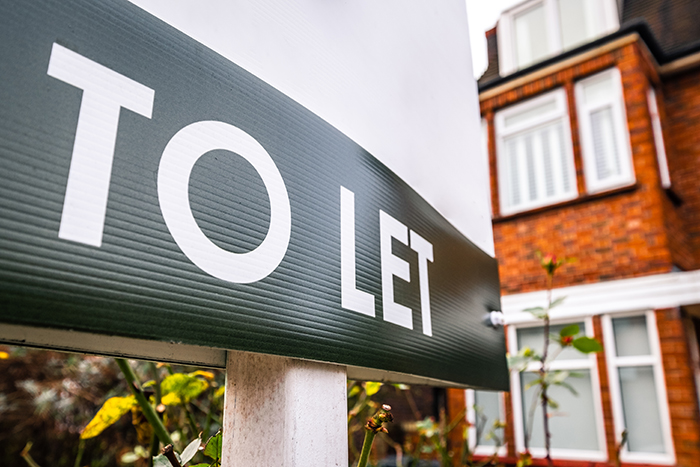
Landlords bought just 10% of homes sold across Great Britain in the first half of this year, Hamptons data shows, the lowest share since its records began in 2010.
The figure is less than the 16% recorded in 2015 before tax and regulatory changes were introduced, which imposed higher costs on property investors.
The property agent says high mortgage rates combined with political uncertainty and the threat of new rental regulations have had an impact on the share of investor purchases and investor appetite, which reached a low of 9.7% in June.
If this trend continues, the firm says there are likely to be 113,630 new buy-to-let purchases across Great Britain in 2024, 40% fewer than in 2015.
Renting in London
On a regional basis, the North East is the highest-yielding location in the country and is where investors remain most active.
The share of homes bought by a landlord has risen from 24% in 2015 to 25% in 2024.
Meanwhile, London is the lowest-yielding region and has seen the biggest decline in new landlord purchases.
The share of homes bought by landlords in the capital has more than halved, from 17% in 2015 to an all-time low of 8% so far this year.
However, Scotland has the lowest level of investor purchases as BTL investors bought only 5% of homes sold in Scotland so far this year, down 10% from 2015 and 7% from 2019.
Six of the ten local authorities with the highest share of BTL purchases are in one of the three Northern regions. Sunderland tops the list, where 45% of homes were bought by an investor during the first half of the year.
Swindon, Enfield and Torbay are the only Southern local authorities to make the top 10 list.
Rising yields
The data shows that the lack of new investment comes despite yields rising to record highs across the country.
Strong rental growth combined with stagnant property prices meant that the average investor purchasing a new BTL in England and Wales this year achieved a gross yield of 7.3%, a whole percentage point more than in 2015, and up from 7.0% in 2023.
It also found that the share of homes sold by a landlord has been falling for the last three years.
Private landlords accounted for 13% of all sellers in Great Britain so far this year, down from 14% in 2023 and 16% in 2022.
Based on current trends, the agent estimates that a further 146,060 homes will be sold by private landlords across Great Britain this year.
This will more than offset the 113,630 new BTL purchases in 2024 and will likely mean that private landlords will have sold 328,750 more rental homes than they’ve bought since 2016.
Low rental supply
The low supply of rental homes continues to put upward pressure on rents with the average tenant paying £1,347 per calendar month to rent a new home in Great Britain last month.
This represents 5.8% or £74 per calendar month more than if they moved last year and means rents are rising nearly three times faster than inflation.
Tenants moving into a new home in Scotland faced the biggest increases as rents on newly let properties went up by 11.1% year-on-year and marked the 39th consecutive month when rental growth exceeded 5%.
However, London is slowing the pace of rental growth across Great Britain as average rents on newly let properties in London increased 2.7% year-on-year.
This represented the weakest annual growth rate recorded since October 2021.
The data comes after the King’s Speech last week, where the new Labour government pledged to “immediately” abolish ‘no-fault’ evictions and “prevent private renters being exploited and discriminated against”.
It also promised to build 1.5 million new homes over the next five years.
Fewer landlords enter the market
Hamptons head of research Aneisha Beveridge says: “Rather than a mass landlord sell-off, the lack of homes available to rent has been caused by fewer investors entering the market.
“Tax and regulatory changes introduced since 2016 have been the main culprit, but these disincentives to invest have been compounded more recently by higher interest rates and political uncertainty around the threat of more rental reform.”
“If investor purchases and sales continued at 2015 levels, there would likely be 450,000 more private rental homes in Great Britain by the end of this year.
Beveridge adds: “This is roughly equivalent to the total number of homes in Birmingham. Most investor purchases this year have been driven by cash-rich, larger portfolio landlords who continue to expand their portfolios”
“The lack of supply is one of the main factors underpinning strong rental growth, and this is unlikely to reverse any time soon.
“The challenge for the new government, which is keen to boost homeownership, is to increase security and the quality of homes for tenants living in the rental sector without disincentivising or pushing out more landlords.”
“While some of the homes that previously would have been bought by an investor have found their way into the hands of a first-time buyer, high mortgage rates and rising rents are likely to lock out many would-be homeowners over the next few years, keeping them in the rental sector for longer.”



